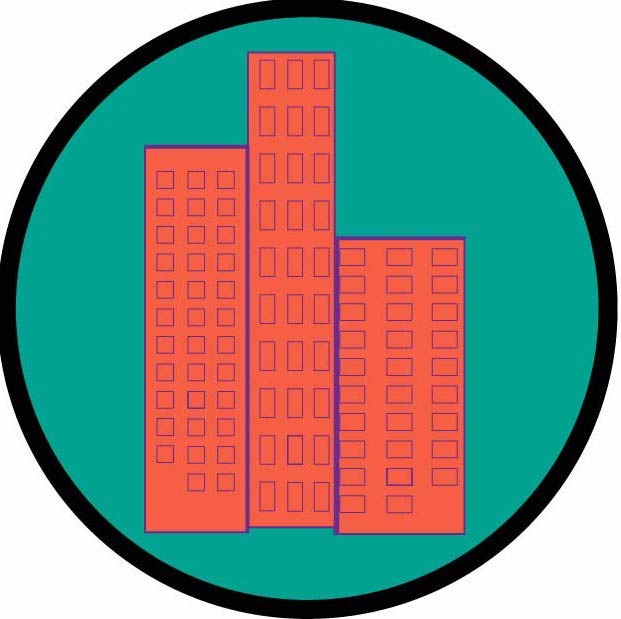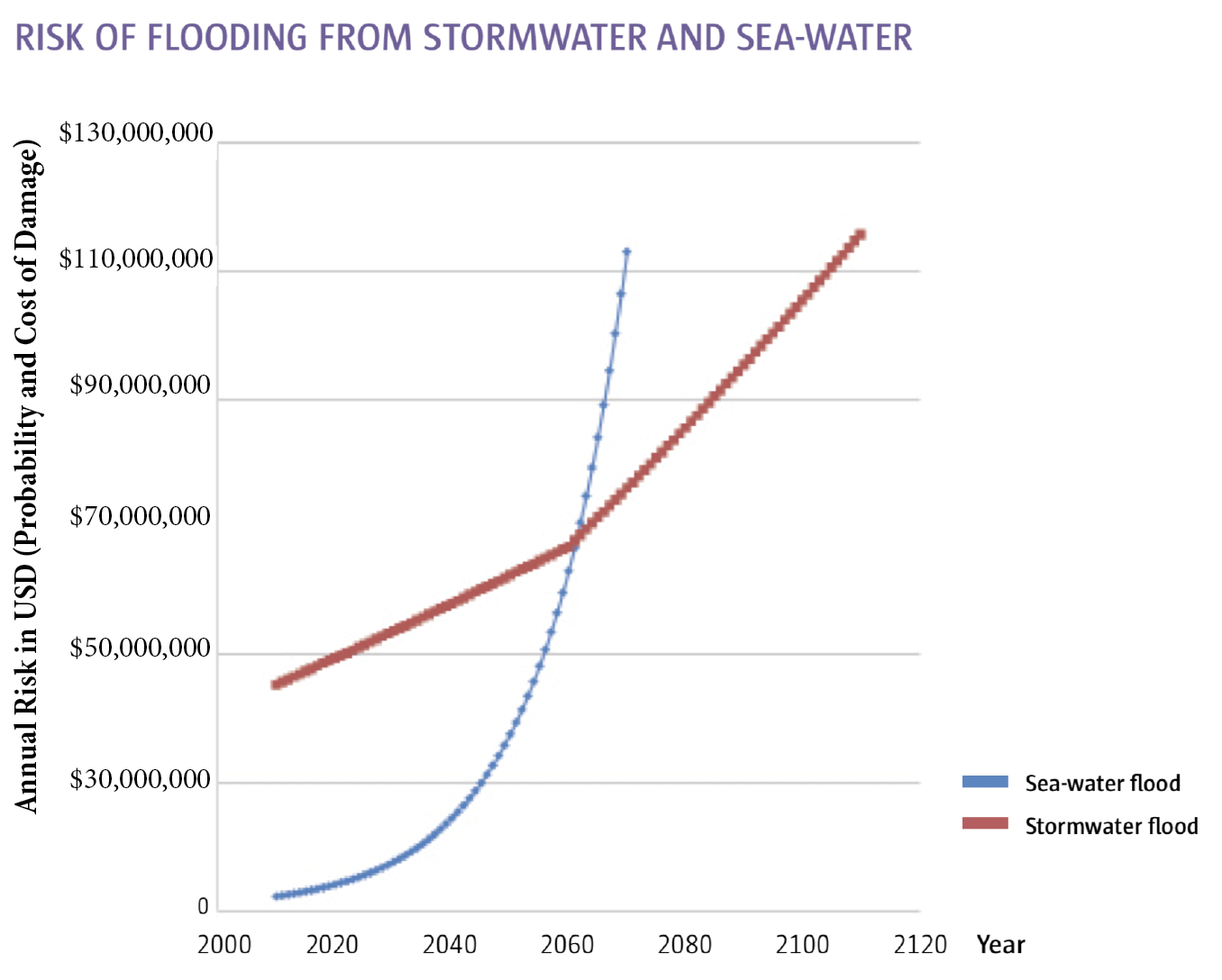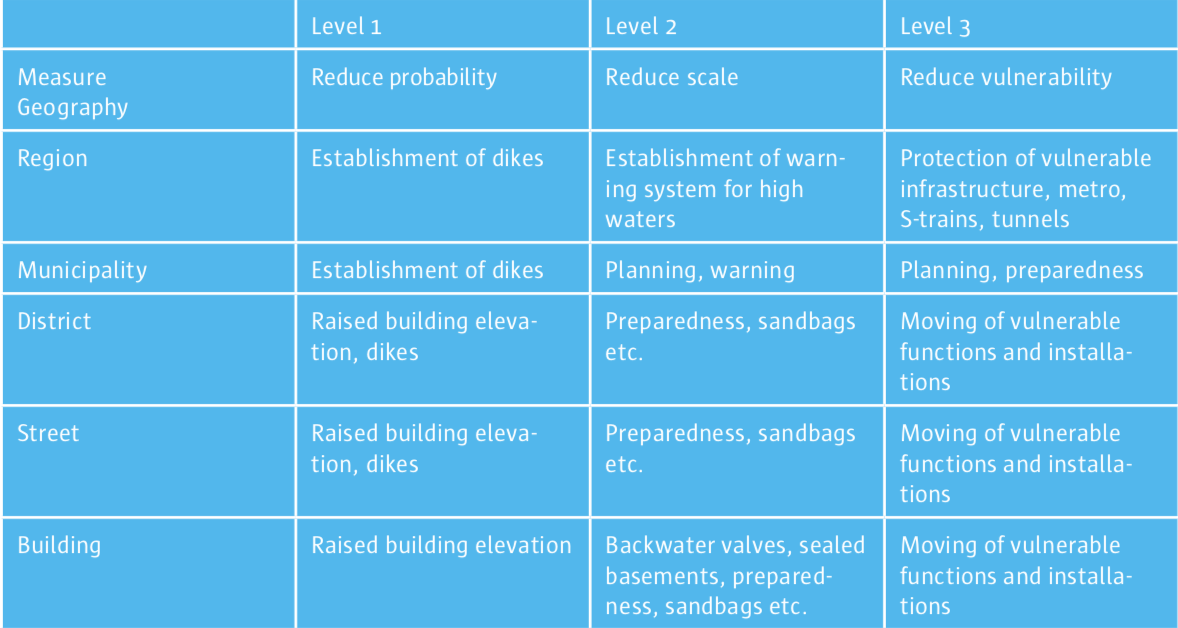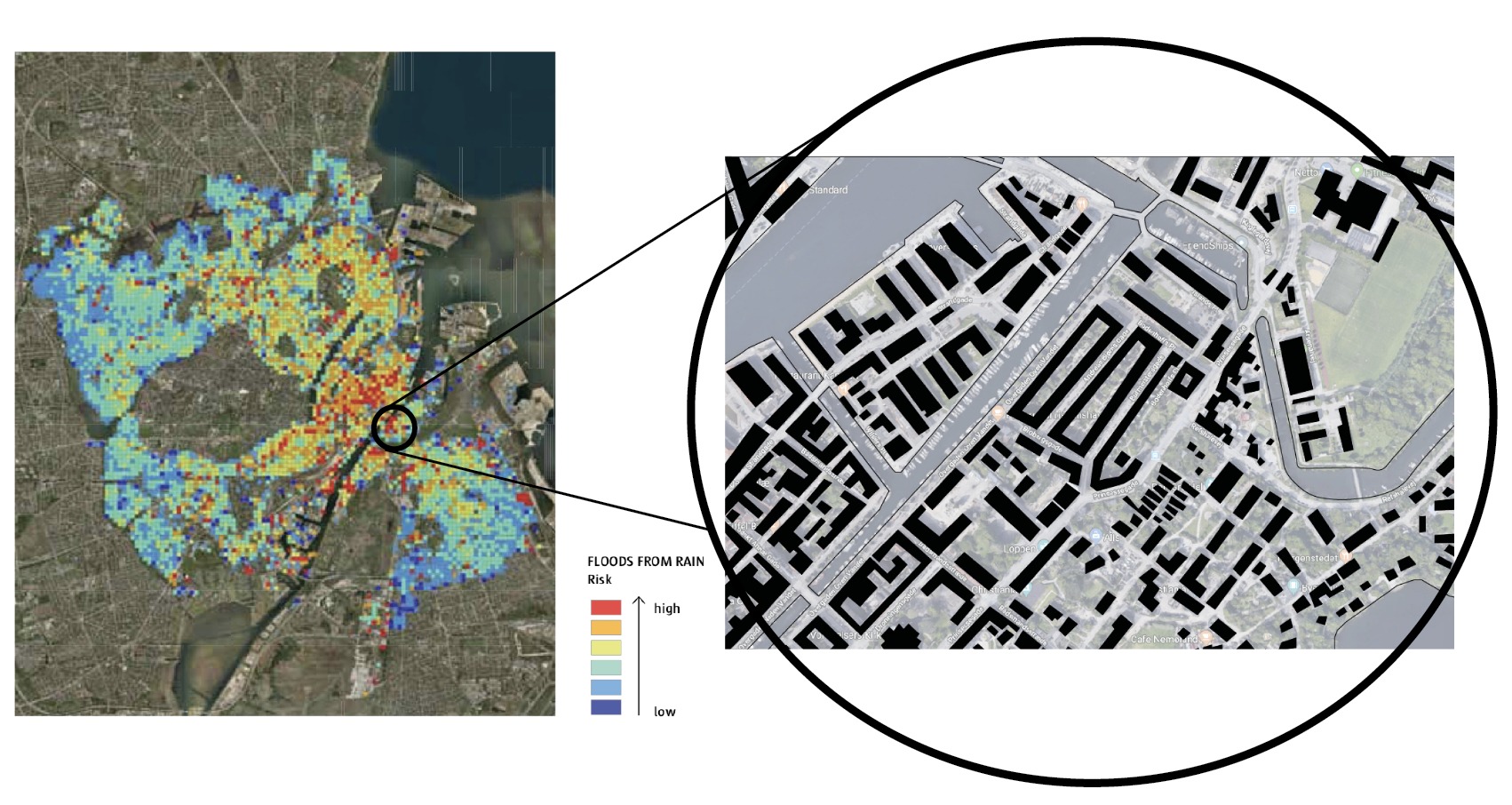Threats that climate change poses in Copenhagen, Denmark
 Copenhagen is working to become a climate-resilient city because they are understanding of the potential dangers that climate change poses on the coastal city and citizens within. Some large concerns include flooding due to rising sea level, intense rains, strong winds, higher temperatures and heat island effect, poor air quality, health effects, and much more. Together the city of Copenhagen and the community have worked together to develop a Climate Adaption Plan for a healthier, safer, climate-resilient city.
Copenhagen is working to become a climate-resilient city because they are understanding of the potential dangers that climate change poses on the coastal city and citizens within. Some large concerns include flooding due to rising sea level, intense rains, strong winds, higher temperatures and heat island effect, poor air quality, health effects, and much more. Together the city of Copenhagen and the community have worked together to develop a Climate Adaption Plan for a healthier, safer, climate-resilient city.
How? You may ask.
By 2025, Copenhagen is on planning to be completely carbon neutral by cutting greenhouse gas emissions by 80%-100%. This is no walk in the park for any city to achieve, but Copenhagen has put together a plan to see what they need to do to achieve this goal. After analyzing the extent of the threats and costs to counteract the threats, the stakeholders (including central government, Copenhagen Energy, CPH city and port development and Copenhagen metro) have created a plan of attack from cost to implementation to achieve a climate-resilient city.

Source of Image: Here
Economic Consequences of Flooding

 Due to climate change, the intensity of a 100 yr flood has increased by 40%. 100-year floods are now occurring every 20 years. This is leading to damage to infrastructure, business, private homes, etc. We are beginning to understand that although the cost of expanding storm sewers, implementing green infrastructure throughout the city, building sea walls, etc. may be very pricy, it can eventually provide a net saving from potential future flooding damages. Not are we only having to consider the flooding from rainwater but also sea level rise. A combination of these two is very threatening to many coastal cities around the world. As the global sea temperature is rising the seawater expands overall increasing the elevation of seawater. Copenhagens sea water level is expected to rise up t0 1 meter in the next 100 years. Copenhagen is also at great risk for storm surges that also cause major flooding within the city. The most powerful storm surges often come from the south of Copenhagen. A storm surge can occur during intense storms causing an abnormal rise in seawater level primarily from the storms wind pushing water onto shore. Another solution to this problem may be just to start building at higher elevations, build up dikes, and heavily invest in green infrastructure to help control rainwater on-site putting less pressure on the storm sewer system.
Due to climate change, the intensity of a 100 yr flood has increased by 40%. 100-year floods are now occurring every 20 years. This is leading to damage to infrastructure, business, private homes, etc. We are beginning to understand that although the cost of expanding storm sewers, implementing green infrastructure throughout the city, building sea walls, etc. may be very pricy, it can eventually provide a net saving from potential future flooding damages. Not are we only having to consider the flooding from rainwater but also sea level rise. A combination of these two is very threatening to many coastal cities around the world. As the global sea temperature is rising the seawater expands overall increasing the elevation of seawater. Copenhagens sea water level is expected to rise up t0 1 meter in the next 100 years. Copenhagen is also at great risk for storm surges that also cause major flooding within the city. The most powerful storm surges often come from the south of Copenhagen. A storm surge can occur during intense storms causing an abnormal rise in seawater level primarily from the storms wind pushing water onto shore. Another solution to this problem may be just to start building at higher elevations, build up dikes, and heavily invest in green infrastructure to help control rainwater on-site putting less pressure on the storm sewer system.
Figure-ground Study of Copenhagen

As we begin to analyze some of the high-risk areas of flooding it becomes easy to see why that is. For example, a figure-ground study of the relationships of urban buildings to water access. In this particular area, you can see just how close the water already is to homes and businesses. These homes and businesses are especially prone to flooding due to the river and several canals weaving through the developed land. This area has been brought to attention and has begun a plan to address the potential flooding issue. A change in infrastructures such as dikes, dams, storm sewer expansion and regulation, raising building and road elevations, and green infrastructure have been addressed and talked about being implemented in and around this sight. The green space in the top right corner of the figure-ground study is also going to double as a stormwater collection site during intense storms. This will help ease the burden of the surrounding community. Just up north the river, placement of a large dike is going to be established to help reduce the water level flowing into the city. In the meantime, before all the infrastructure gets updated/installed in the city simple acts of action being prepared such as sandbags, planning, warning systems, and protection of the metro system will have to do.


Urban Heat Island Effect
Global temperatures are rising and the city of Copenhagen is getting warmer due to urban heat island effect. The surface temperature of the city rises when the sun is shinning due to the absorption of heat on buildings, roads, roofs, etc. The albedo of an object gives us a rate at which an object can reflect or absorb light. light-colored objects reflect light and dark-colored objects absorb light. Believe it or not, we can control the urban heat island effect to a significant extent because we understand why it happens and what we can do to prevent it.
 Through the power of green infrastructure, we can help prevent the urban heat island effect. One method of prevention is green roofs. Green roofs are a form of green infrastructure that prevents a building roof from absorbing heat but also cools the air around it. Overall, this helps reduce energy consumption. Another form of prevention is green spaces in parking lots such as tree plantings and other vegetation, this helps evaporate cooling but also help reduce the heat absorbed on the paving due to the shade of the trees. The last example of prevention is pocket parks and large city parks. Having open space for vegetation to grow in a big city can help purify the air as well as help cool down the surrounding area. parks are also perfect for reducing pollution, making communities safe, more sociable, and supports the ecology for the surrounding environment.
Through the power of green infrastructure, we can help prevent the urban heat island effect. One method of prevention is green roofs. Green roofs are a form of green infrastructure that prevents a building roof from absorbing heat but also cools the air around it. Overall, this helps reduce energy consumption. Another form of prevention is green spaces in parking lots such as tree plantings and other vegetation, this helps evaporate cooling but also help reduce the heat absorbed on the paving due to the shade of the trees. The last example of prevention is pocket parks and large city parks. Having open space for vegetation to grow in a big city can help purify the air as well as help cool down the surrounding area. parks are also perfect for reducing pollution, making communities safe, more sociable, and supports the ecology for the surrounding environment.
Poor Air Quality & Health Effects
Not only is the infrastructure of the city at risk due to climate change but also the citizen’s health. The air that we breath is starting to change due to air pollutants such as particulate matter, increase carbon dioxide and ground-level ozone. More cases of cardiovascular and respiratory effects, disease, asthma attacks, difficulty breathing, etc. are being reported. Air Quality Impacts can really cause issues in a city, as well as reduce visibility often causing traffic accidents. Growing up in a polluted city is very dangerous for children. This is why it is incredibly important for not only adults to take a stand but the children themselves.
How the Youth are Getting Involved with Climate Change
![]()
Youth take a stand at the Copenhagen Climate Conference demanding actions to be taken so their future is not at stake. Over 1,000 kids from various countries around the world traveled to the Copenhagen climate conference to be heard. Often when it comes to large political decisions youth are not included what so ever because they are considered “too young to understand.” Well not here in Copenhagen. Everyone’s voice deserves to be heard, especially the youth that climate change will be greatly affecting in the future. listen to the young American activist, Brianna Cayo Cotter to see her perspectives and she shared at the Copenhagen Climate Conference.
Leave a Reply